Talent development residencies by the Great European Lakes



Throughout July, 2025 in the frame of the Lakescape project 3 talent development residencies enabled peer intercultural and artistic exchange, hands on knowledge and contemplative setting for 12 designers to discuss, be inspired and work in the close relation to lake live within Lake Vanern (Sweden), Ohrid Lake (North Macedonia) and Lake Balaton (Hungary).

These Great European lakes are significant water organisms that are providing sustainable environment for their inhabitants for millennia’s. Across three countries, the designers tested low-impact techniques, shared skills, and built networks with lakeside communities. The result was a grounded exchange where ideas moved quickly from discussion to prototype.
Designing With Lakes
The Vänern Residency
Lake Vanern talent development residency took place in Lidköping, Sweden at the Vänermuseet, from 23–26 June, 2025 curated and coordinated by our project partner Transfersal project . Vänermuseet hosted a compact, four-day series on making with—and thinking through—water, aimed at craftspeople, designers, artists, and curious adults. All sessions were in English, free of charge, and required no registration.


Lake Vanern talent development residency took place in Lidköping, Sweden at the Vänermuseet, from 23–26 June, 2025 curated and coordinated by our project partner Transfersal project . Vänermuseet hosted a compact, four-day series on making with—and thinking through—water, aimed at craftspeople, designers, artists, and curious adults. All sessions were in English, free of charge, and required no registration.
It opened Monday, 23 June with the lecture “Catalyst for Green Creativity,” run with the Biosphere Reserve Vänerskärgården med Kinnekulle. Process leaders outlined UNESCO biosphere reserves as practical testbeds where ecological, economic, and cultural values meet, then guided participants toward a usable “ecological compass” for their own practice.
Budapest-based product designer Rebeka Csiby-Gindele led “Floating: Body, Memory, and Water” workshop. Attendees exchanged short stories and took part in a simple hands-on exercise examining how objects shape behavior in natural waters—what people bring to the shore, how materials influence leisure, and how design can support playful but respectful use of lakes.


“Meeting of Tradition and Innovation” is a workshop with bio-designer Michelle Heising. After a briefing on Natural Microbe Water Filter a floating mycelium-based device intended to degrade pollutants - designed in collaboration with her collaborator MicoMine - participants mapped local basketry and fishing know-how and prototyped elements that could inform the next iteration.


“Filigree – Tradition in a New Light” featured by the North Macedonian silversmith Marta Pejoska traced two decades of work revitalizing filigree, linking lake-inspired motifs to contemporary jewellery practice, followed by an open conversation. The workshop and hands – on session, concluded with “Vänern Below the Surface” by textile/social designer Elna Aurand. Participants made biodegradable wool sensors, submerged them along the shoreline, and used color, scent, and texture changes as a simple, participatory readout of lake conditions - bridging design, science, and everyday stewardship.


In parallel, the Testmarket Residency Lidköping brought architecture students from Europe and the U.S. to design and trial floating platforms for an upcoming floating market on Vänern. Using existing rafts, teams stress-tested logistics, stability, and visitor flow, while studio workshops produced sketches, models, and prototypes. A communal dinner closed the day with a debrief. Organized by Floating Neighbourhood with Dals Långeds Utvecklingsråd, in collaboration with HDK-Valand Steneby (University of Gothenburg) and the University of Washington’s landscape architecture school, the exercise fed directly into build plans for Lidköping’s water-based marketplace.


The program of the Vanern talent development residency delivered practical methods, relevant contacts, and clear next steps for greener creative practice - treating the lake as both context and collaborator. Beside the Creative Europe support, this residency was supported also, by the Swedish art council.
creative practice
Meets Freshwater Reality
Struga hosted the second Lakescape talent development session (10-16, July), a week that put artists and artisans in direct dialogue with Lake Ohrid—its science, heritage, and communities. The program, organized by project partner INKA, mixed site visits, talks, and hands-on, making to ground creative work in freshwater realities.

It opened with a guided tour of the Natural-Scientific Museum “Dr. Nikola Nezlobinski,” including the Vangel Kodžoman gallery. Biologist Dance Adjioski walked participants through the museum’s origins—its founder came in 1926 to fight malaria—and the lake’s endemic species, setting a factual baseline that many later used as source material.
That evening, at Hotel Solferino’s beach, designer Hajnal Gyeviki staged Balaton Borders: a dinner talk served on her ceramic tableware carrying scientific data about reed cutting, erosion, and urbanization around Lake Balaton. The format—part meal, part briefing, and in a whole, performative art experience—prompted frank discussion about design’s responsibility when lakes are under pressure.


Sunday’s fieldwork took the group to the fisherman village of Radožda, where residents outlined overfishing, waste, and other communal challenges. Participants gathered shells, stones, and debris for their working collections. That night, the open forum “Lake Talks: Us and the Lake—Chronology of an Ancient Relationship” drew a local audience to the Cultural Centre. Underwater archaeologist Valentina Todoroska connected submerged layers to long human–lake coexistence; biologist Altina Ismaili detailed Ohrid’s self-sustaining, endemic ecosystem and its threats; and activist Katerina Vasileska warned how World Heritage status can fray without responsible tourism.
Monday’s study tour in Ohrid added the systems view. At the Hydrobiological Institute, scientist Angela Taseska outlined monitoring tools and conservation work, including breeding of the endemic Ohrid trout (Salmo letnica). The group continued to St Naum Springs, the lake’s freshwater “engine,” before meeting master craftspeople in the old town (woodcarving, metalsmithing, filigree, Ohrid pearl) alongside newer studios.


On Tuesday, the artistic duo OAZA (Viktorija Poposka and Ana Todorovska) led an open workshop in Solferino’s garden on turning textile scraps into wearable pieces—using making time to debate fast fashion’s water footprint and what local action can look like.


The session closed Wednesday with a Floating Market on the Struga waters. Local makers—among them Sanja Mikrogreens, Poraka Nova, Duḱan, Bache handmade design, Makalo od Dese, Leska Craft, Dijana handmade, Another Universe Manufacture, Kalin ceramics, SAVE Sustainable Fashion, Pleteni prikazni, and Darovi od prirodata—placed their stores on a boats and invited local beach goers to come and shop in water. One of the boats was reserved for Lakescape residents - Linnéa Ekelöf, Marianne Hellman, Hajnal Gyeviki, and OAZA. Kayaks and SUPs ferried visitors; music and refreshments kept the tempo. More than a showcase, the market tested how commerce, culture, and ecology could meet on the lake itself. The floating market was enabled thanks to the local partnership and co organization with Europe House Struga, and Solaris Sport club, Struga. Beside the Creative Europe support, the event was supported by the Ministry of culture and tourism of N. Macedonia, through creative industries support program.

The Struga session delivered what it promised—social and scientific context, practical skills, and public engagement—so that future work by participating creatives can speak credibly for lake life and the communities that depend on it.

MediCina Valley Sessions
Making With Nature
MediCina Valley, sustainable community at Barnag hills around Balaton Lake in Hungary, hosted four of our creators and offered hands-on outdoor workshops, from 15–18 July 2025. The event was curated and coordinated by Pro Progressione, the Hungarian partner in the Lakescape – lake restoration network.


On the bookmaking workshop with Márk Somogyi, participants were moving through three formats—from zine and “instant book” to a long-stitch, adhesive-free binding—touching on origami structures and the role of art/silent books.

The talk by former Szabadon Balaton managing director Diana Berecz that was focused on approaches to a free and sustainable Lake Balaton, concluded the first residency day. The following day continued with plant-based dyeing workshop with Maria Kazimierczak. The artist gave hands-on trials with plant-based dye processes: painting, block printing, and dip dyeing on provided fabric swatches.
Sculptor and designer Jasmina Glavince held workshop for making paper from recycled pulp, local plant fibers and lake algae. In a small-group whittling circle, Sandra Stigert guided beginner-friendly wood-carving - focused on process and attentiveness rather than finished objects.
What was also enriching and mindful for this residency is that creators had an unusual chance for a getaway in nature. Creators stayed in yurts, surrounded by trees, drinking water from a fresh river and eating organic vegetarian home cooked meals. The experience was rewarding for artistic wellbeing - providing slowness and quiet connection with nature, with self and with the group.
The week closed with the Floating Market at Örvényesi Free Beach on Friday, 18 July, showcasing lake-inspired, sustainable craft by Lakescape creators participating in the Balaton talent development residency.

For any questions, contact us via email and social media
info@lakescape.eu




